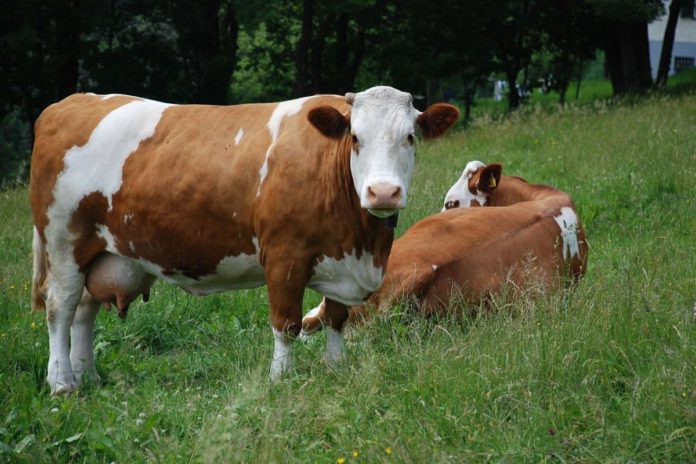The Irish dairy industry often faces criticism for ‘flooding’ the market with poorly conformed animals. Could converting to a dual breed, like Fleckvieh, be the solution many Irish dairy farmers are seeking?
Origins of the breed
Fleckvieh are a type of Simmental that are recognised internationally as a single breed. They are a dual-purpose breed originating from Austria, with Germany boasting the largest Fleckvieh population in the world.
They were bred for milk, meat, and work, to achieve this, farmers crossed Swiss Simmental bulls with local Austrian cattle.
The breed is renowned for exceptional fertility, longevity, calving ease, a low somatic cell count, strong feet, and overall good health traits. Given these characteristics, could Fleckvieh be the ideal breed for more dairy farmers to switch to?
Milk yield ideal for Irish dairying
This breed reportedly milks roughly 6,000 kgs in their first lactation and over 7,000 kgs in their later lactations.
They have an estimated milk fat percentage of 4.2 and an estimated protein percentage of 3.7. Compare those numbers with that of a Holstein or Jersey cow, and it highlights how great this conversion could be for the Irish farming market, as, overall, it makes them an ideal cow for milking.
Yes, Holsteins do produce more milk than Fleckvieh cows but at what cost?
The Holstein breed has a lower reproductive performance. In Austria, about 15% fewer semen straws are needed to get Fleckvieh cows in-calf due to their exceptional fertility.
The mastitis rates in Fleckvieh cows are lower, reducing costs in treatment, and overall, less milk is being thrown out, so there’s a lower loss in milk production.
The Fleckvieh cattle in Austria are lower in SCC by 30% compared to their Holsteins. Fleckvieh cattle, on average, live longer than Holsteins.
The mortality rates of calves are lower with Fleckvieh than Holstein cows, around 20% lower stillbirth rates. This adds up to a lot more calves.
So overall, they reportedly produce more milk than a Holstein not in a lactation but in their lifetime due to their longer lifespan.
Fleckvieh Beef performance
This breed is also renowned for its great beef production. The daily weight gain of a Fleckvieh is expected to be 1.44kg and their EUROP classification E and U: > 85%.
This makes them an ideal breed for dairy farmers to be injecting into the beef sector and should decrease the amount of low graded cull cows/ dairy calves being slaughtered in Irish factories.
Producing a valuable calf
Many dairy farmers breeding to keep replacement heifers often find it difficult to sell on the Holstein/Jersey bull calves that are born. This is a large loss in profitability each year.
Switching to Fleckvieh could be an ideal solution, especially for those that want to breed cows with a good milk yield for their herd. It will also allow them to be able to make a profit selling top-quality bull calves for the Irish beef sector.
Fleckvieh – A valuable cull cow
Not only does the farmer have a cow that milks well, but this breed also leaves them a brilliant cull cow that can be sold and fattened. A Fleckvieh cow, unlikely other breeds, is likely to grade at an R in the factory due to dual-purpose qualities.
Article co-written by Catherine Creighton and Catherina Cunnane.





